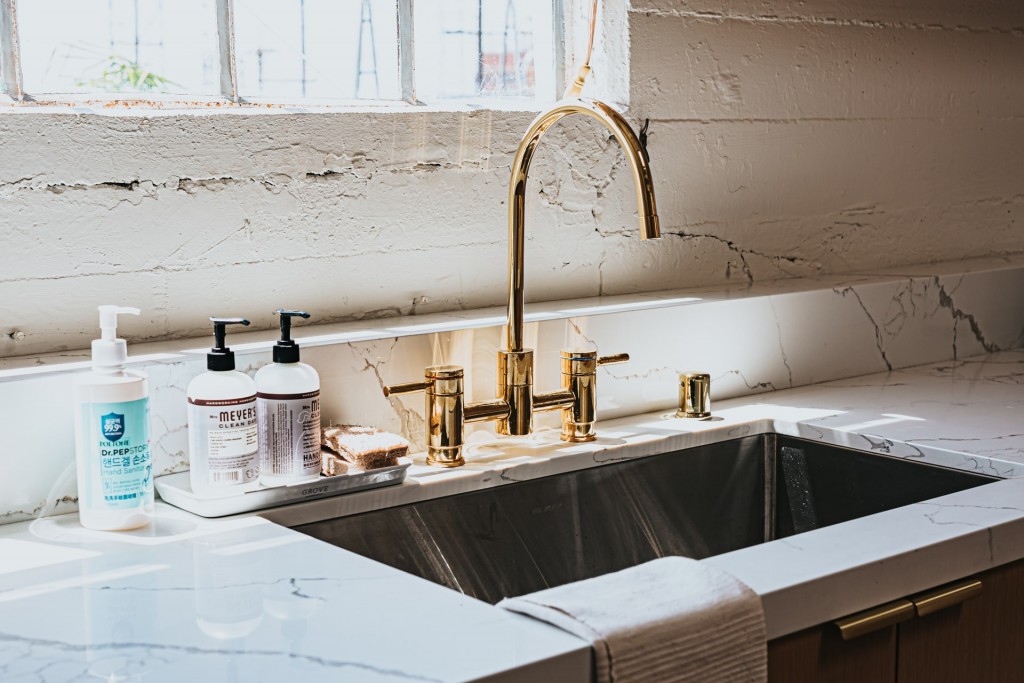 Trying to keep things clean during the years of COVID-19 has been hard for all of us. But, even as the fears of the pandemic begin to wane, we have become more aware of our hygiene practices and become accustomed to taking better care of our surroundings. If you’re becoming more aware of the hygienic pitfalls in your own kitchen, you might be looking for an update. When it comes to replacing your countertops, Solid Surface is exactly what you need. For easy-to-sanitize countertops for your kitchen, here’s why Solid Surface has the alternatives beat.
Trying to keep things clean during the years of COVID-19 has been hard for all of us. But, even as the fears of the pandemic begin to wane, we have become more aware of our hygiene practices and become accustomed to taking better care of our surroundings. If you’re becoming more aware of the hygienic pitfalls in your own kitchen, you might be looking for an update. When it comes to replacing your countertops, Solid Surface is exactly what you need. For easy-to-sanitize countertops for your kitchen, here’s why Solid Surface has the alternatives beat.
Easy-to-Sanitize Countertops
First, let’s talk about what makes Solid Surface easier to sanitize than the alternatives. First, Solid Surface is made of one solid piece. Our countertops are made by pouring a liquid into a mold. This liquid is a compound made to set into one solid piece, kind of like cement. The surface is smooth and seamless when it’s finished. That means there are no hidden cracks, seams, or otherwise where bacteria, mold, or viruses can hide when cleaned.
Tile countertops are full of places for germs to hide. There’s the dips of the grout, but also the more porous nature of the grout itself. Laminate countertops are hardly better. They’re full of seams where bacteria can hide as well as countless scratches and nicks from regular use. The only alternative even close to Solid Surface in hygiene is solid stone. Stone countertops are extremely costly and impossible to fix nicely when damaged.
Longevity
As we mentioned, stone countertops – the other most hygienic and tough option for countertops – fall short of Solid Surface. Stone is impossible to repair when damaged without leaving the unsightly traces of repair. Solid Surface can be repaired with more of the same compound it was made with. When hardened and sanded, the countertop will look like new again, and be just as strong as before. Even stone repaired in a way that looks alright will not recover its strength.
Aside from stone, other countertop alternatives can’t even begin to compete with Solid Surface. Tiles, laminate, wood, and other styles are damaged easily. Dropping a heavy pot a little too hard will crack a tile. Rubbing against the edge of a laminate countertop can peal back the laminate coating and snap it off entirely. All of these options are easy to scratch, dent, and more.
No matter what damage your Solid Surface countertops sustain, it can be filled in, sanded, buffed and made good as new. It’s simply the most versatile option for kitchens everywhere.
Sink Hygiene
Finally, we can’t ignore sink hygiene. Kitchen sinks are one of the most bacteria-ridden places in the room. There, we wash our hands of germs, clean dirty dishes with leftover food particles on them, and then leave the place damp and ready for any germs that are looking for an easy place to multiply.
Solid Surface sinks solve many of the hygiene problems common with lesser sinks. For one thing, they can be connected to Solid Surface countertops using the liquid compound. Once hardened and sanded down, there will be no seam between sink and countertop. Therefore, there will be no place for food particles and germs to collect alongside the sink.
Additionally, due to the hardy nature of Solid Surface, and the smoothness of its surfaces, the sink basin is also less likely to collect bacteria. Even dishes piling up and scratching against the inside of the basin won’t leave permanent damage. Any deep scratches, dents, stains, or otherwise can be buffed out, returning your sink to its original state.
Call us today if you have questions or would like to upgrade your kitchen today.
